After completing this tutorial, you’ll add your email account to a warm-up.
Step 1: Choose account and set warm-up settings –>
Step 2: Select warm-up strategy –>
Step 4: Start warm-up and monitor results –>
Step 5: Check deliverability –>
How Email warm-up works
The process works by consistent email exchanges with other warm-up users. This recreates positive email activity that improves your sender reputation.
Better reputation means better deliverability — your future campaigns are more likely to reach the Inbox, not spam or Promotions folders.
Here’s what you get using Snov.io’s Email Warm-up:
–> Wide compatibility: It is compatible with any email service provider.
Whether you’re using a popular service or a specialized SMTP host, the warm-up is accessible to you.
This ensures better deliverability and sender reputation with any email service you use.
–> Warm-up automation: Once initiated, the warm-up process runs automatically until completion.
Your only task is to monitor your deliverability score and track its progress.
–> Sending volume increase: Email Warm-up prepares your email account for sending larger number of emails safely.
You can set a daily sending goal based on your planned email campaign volume.
–> Deliverability boost: The warm-up effectively resolves any deliverability issues related to a low sender reputation.
You can track warm-up progress and deliverability score within your account.
Before you proceed, read our tips to achieve the best warm-up effectiveness –>
How to start a warm-up
Go to the Email Warm-up page and click the + Add mailbox button.
Let’s quickly review the warm-up settings.
Step 1: Choose account and set warm-up settings
First, choose an email account to warm up.
The drop-down list will contain the mailboxes that you’ve connected to Snov.io.
Note: Warm-up emails do not count towards your email account’s Messages per day limit, but do count towards your provider’s limit.
Adjust the daily sending limit in your email account settings for the necessary volume of both email campaigns and warm-up campaigns.
The core warm-up settings are pre-filled to the recommended defaults but you can adjust them for better warm-up efficiency.
Here’s a brief explanation of what they mean:
1) Reply rate:
The reply rate is the main metric providers use to determine if your emails are wanted.
A good reply rate has the most positive impact on your sender reputation. The highest value you can set here is 45%, as higher values might appear unnatural.
2) Campaign deadline:
This is the date when your warm-up will automatically end.
Set it for 30 days to prepare a new email account for campaigns, or for two weeks to restore a damaged sender reputation.
3) Schedule:
Here, you can set the time and days of the week when your warm-up will be active. For best effectiveness, adjust the schedule to match the times when you usually send your email campaigns.
Without any scheduling, the warm-up will be performed throughout the day at a natural pace, with human-like delays.
Step 2: Select warm-up strategy
Select a strategy that is suitable for your warm-up goal.
Progressive strategy:
A progressive warm-up will gradually increase the volume of emails sent each day by a set number until it reaches the Daily sending goal.
This strategy is best suited for preparing a new email account or an account with low activity, and for building up your email account’s sending volume.
The recommended default settings are:
- Starting volume (the limit for the first day of warm-up): 2, with a maximum of 5.
- Daily volume increase: 2 (maximum 5).
- Daily sending goal: 40 (maximum depends on your plan).
If your plan is to send 50 emails daily in campaigns, this should be your warm-up’s daily goal.
If you plan to send 100 emails daily, your warm-up goal should also be set at 100.
We recommend setting a daily goal of 40 emails because it is a super safe number for your account’s reputation.
However, you have the flexibility to increase this number as needed based on your plan—sending up to 100 emails per day is generally considered a safe goal.
Be cautious with higher values; sending more than 100 emails per day increases the risk of being blocked by your provider.
Steady strategy
The steady warm-up maintains the same email volume every day.
This strategy is most effective for recovering a damaged sender reputation and improving your email deliverability.
Based on your needs, you can set a higher limit for Messages per day. For best warm-up results, this number should match the volume of emails your email campaigns are sending.
Step 3: Add email content
To maximize the effectiveness of the warm-up, the email content should look like human communication.
Our system uses a GPT language model to generate human like text for initial emails and replies.
You have the option to regenerate an email copy until you find one that suits your preference. Any of the generated copies will serve their purpose effectively.
Step 4: Start warm-up and monitor results
During the warm-up process, your email account will send emails and receive emails from other warm-up participants.
There’s no need to reply to these emails, as the warm-up system will automatically generate a reply.
You’ll find the warm-up emails labeled with “snovio” in your inbox. As the process progresses, you can monitor your Deliverability score on the warm-up dashboard.
Once your score reaches 90% or higher and the volume reaches the daily sending goal, continue the warm-up for a few more days to solidify the results.
What’s next: Deliverability check
After finishing the warm-up, test how well your real emails are being delivered by using our tool.
You can also check your sender domain settings (DNS records) and make sure your email content follows the recommended practices.
Go to the Deliverability check page.
Click Get started and create a test.
While warm-up plays an important role in building your email reputation, there are other factors that contribute to your deliverability.
Learn how to avoid spam filters –>
If you have a question that we haven’t covered, feel free to reach out to our Customer Care team. You can contact us at help@snov.io or through live chat. We’re here to assist you!
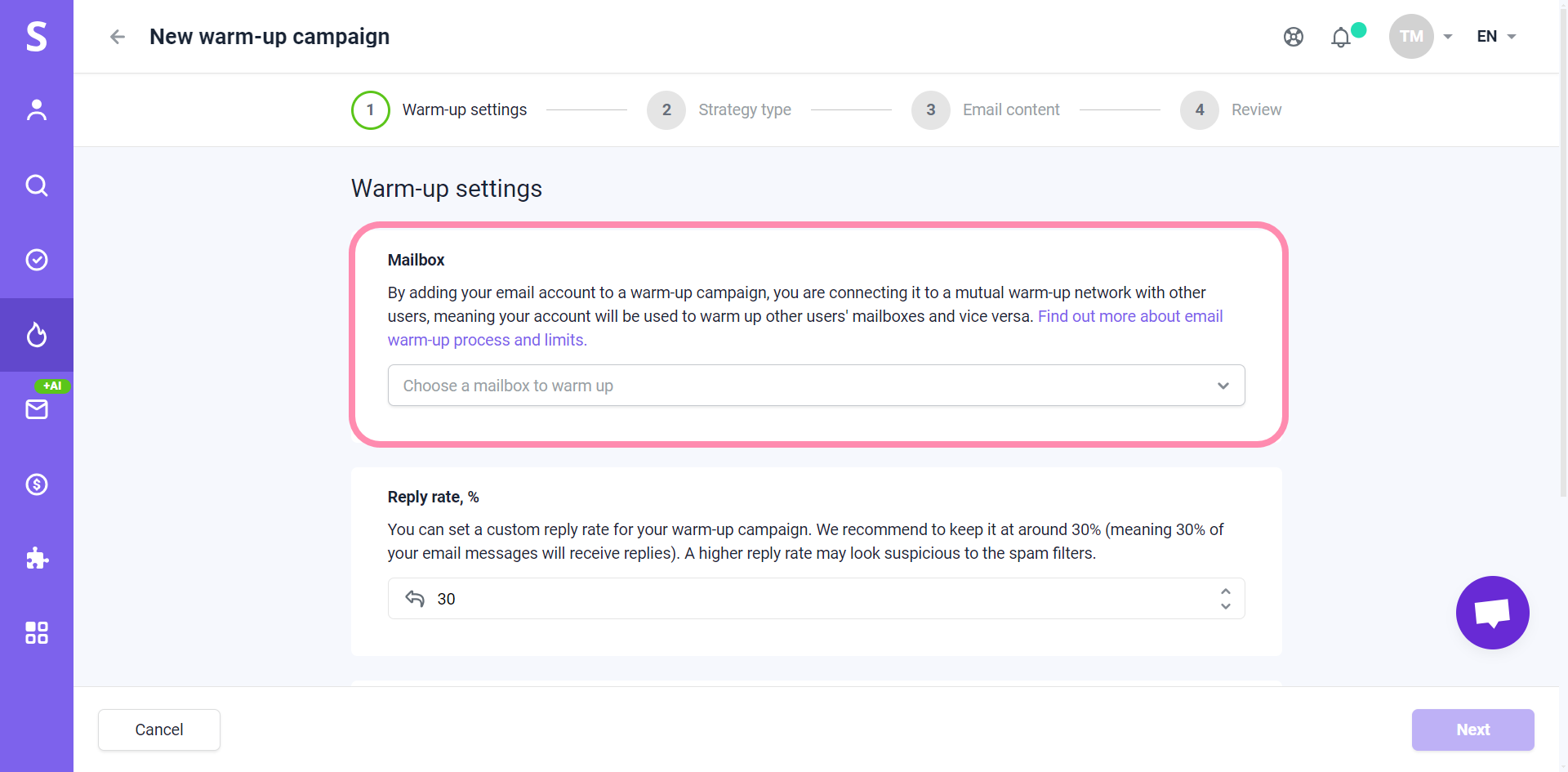
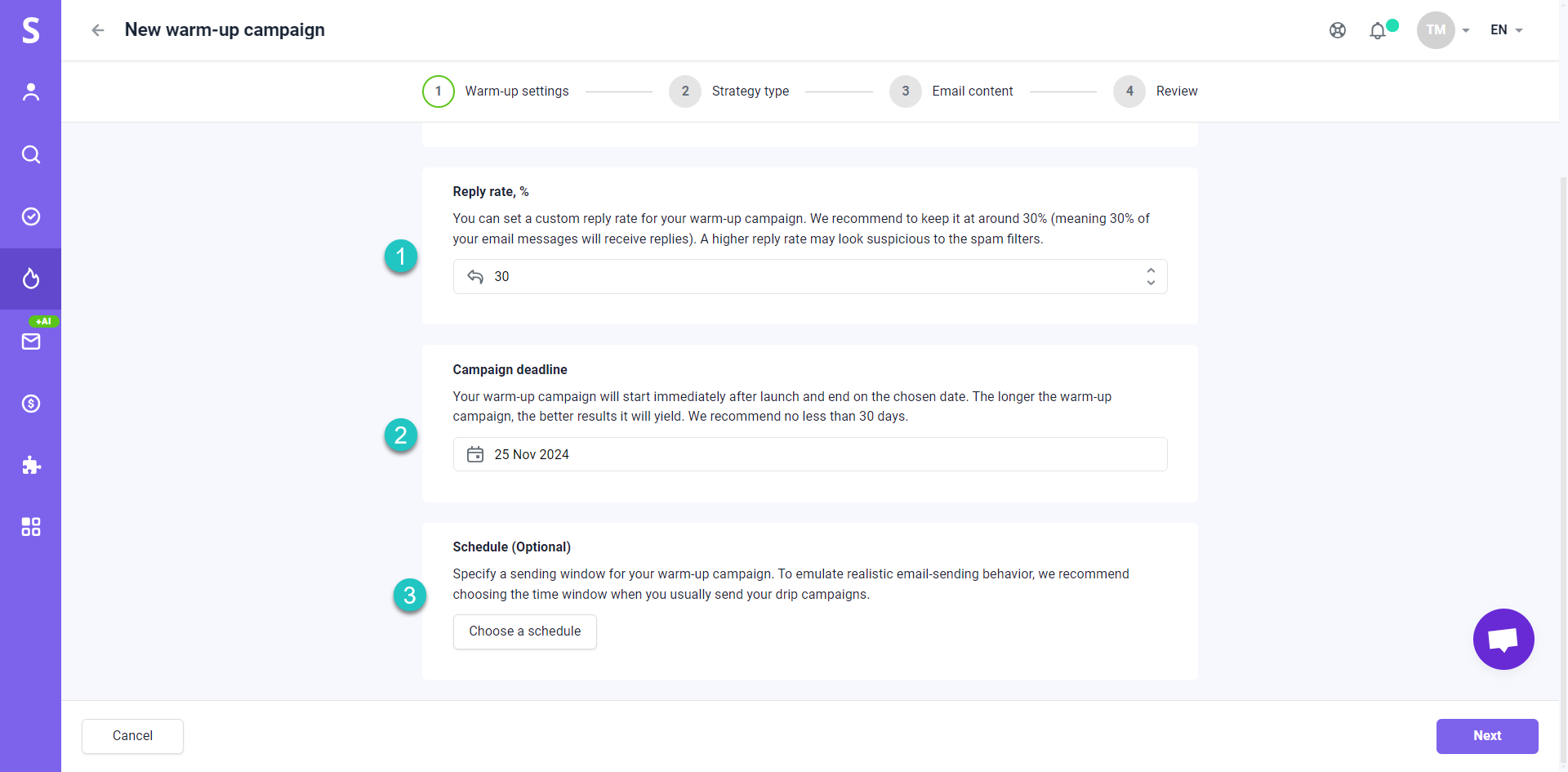
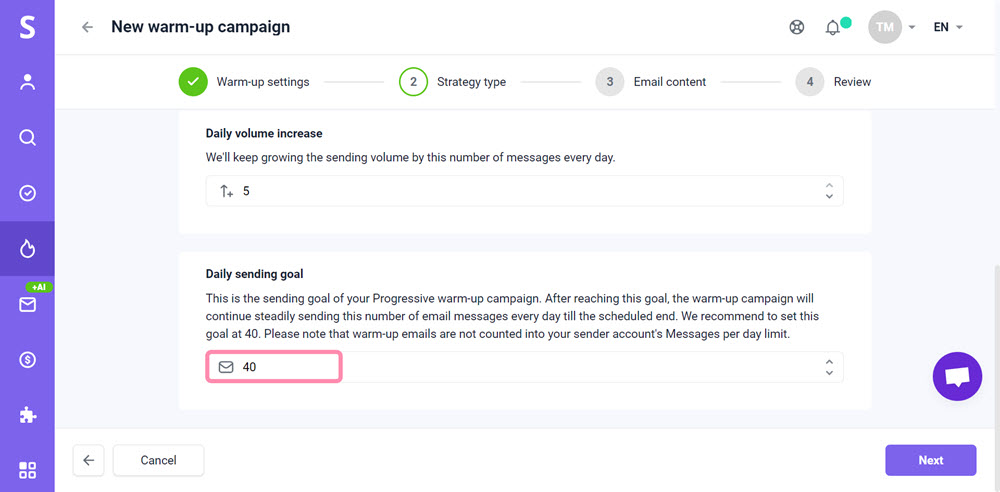
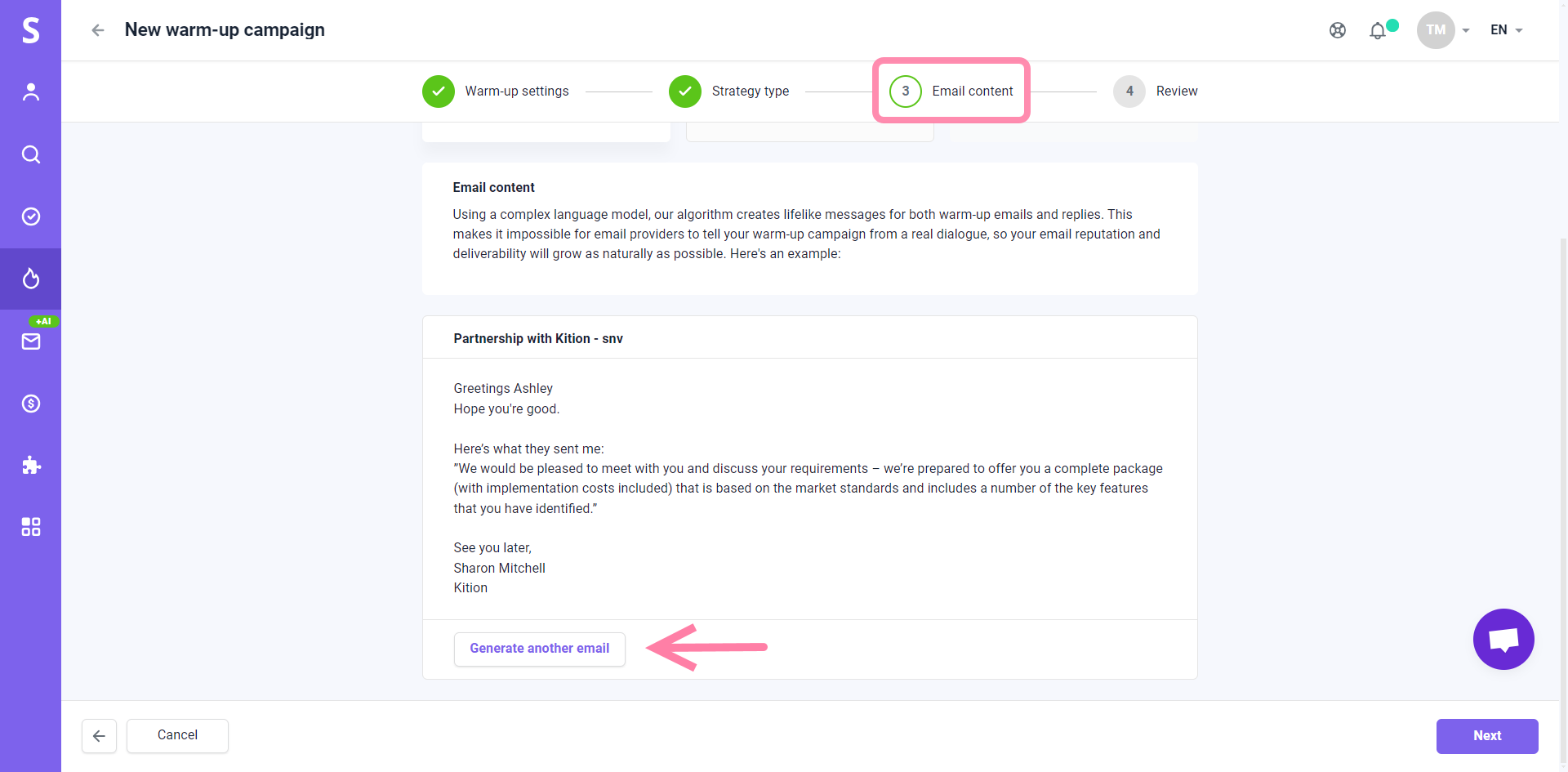
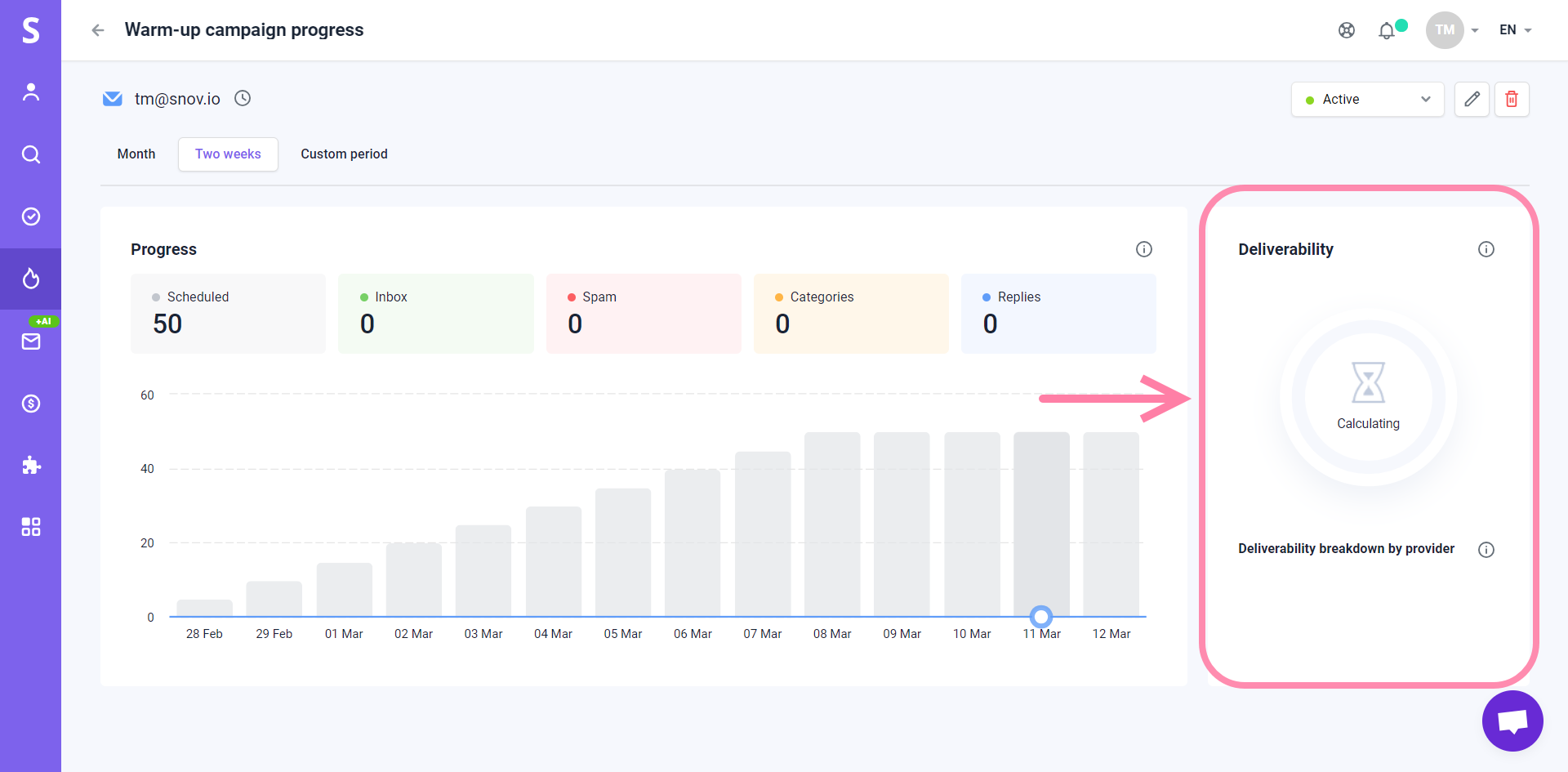
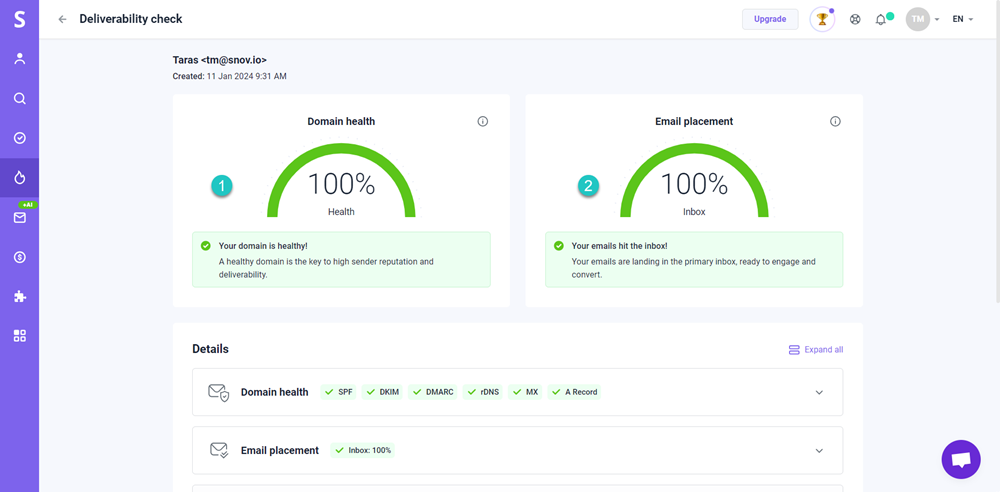
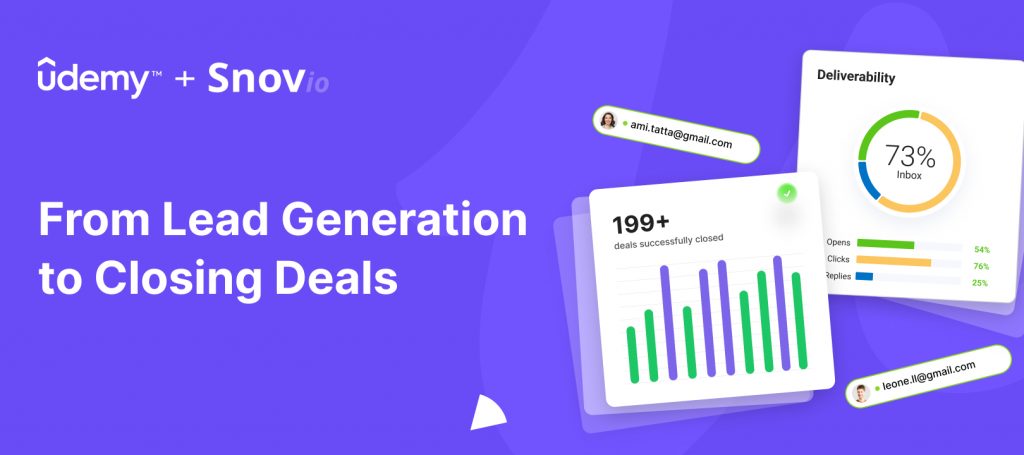

Sorry about that 😢
How can we improve it?